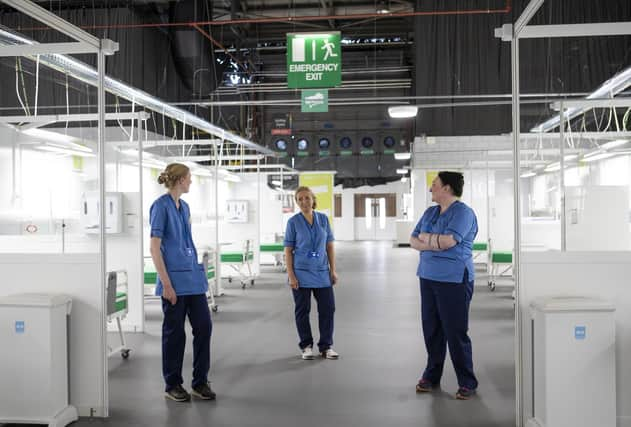The far-reaching impact of NHS Louisa Jordan on the construction industry - comment


Following the outbreak of Covid-19, the NHS and Scottish Government called on the construction industry to help by building a temporary hospital in just 20 days. The response was rapid, but wider lessons have also been learnt – with an industry that looks to be on the cusp of change.
Bricks and mortar, that’s what people think of when asked to describe the construction industry, yet recent events relating to Covid-19 have shown exactly what the built environment is about – people working together to deliver solutions.
Advertisement
Hide AdAdvertisement
Hide AdThe construction industry in Scotland rallied to support the NHS and government and aid the response to the outbreak of the pandemic. In just 20 days, the Scottish Event Campus (SEC) in Glasgow was converted into a temporary hospital to provide 300 beds initially, with the ability to be able to accommodate up to 1,000 patients, if required.
The scale and speed of this project was unlike anything I have witnessed in my career and it was achieved through a skilled network of people, from clinicians, architects, the Army, craftspeople, and more. In my view, it is one of the finest examples of collaboration and I could not have been prouder that Kier was one of the four construction partners.
Between the partners and their supply chains there were about 550 contractors on site at the peak of construction and collectively worked 120,000 hours in just less than three weeks to have NHS Louisa Jordan ready.
To give a sense of scale, 23,000 square metres of flooring were laid, that’s the equivalent of nearly five football pitches, and 35,000 metres of network cabling laid – that’s nearly the length of road from Glasgow to Kilmarnock.
Demonstrable benefits
There are a number of lessons to take away from the construction of NHS Louisa Jordan, none more so than how collaboration – working together, sharing best practice and problem-solving as one – has demonstrable benefits for all. With a focus on the end vision, in my view we should all be looking at projects to see how we can better work together, from inception and design, through to procurement and construction.
Covid-19 is likely to expedite change within our sector, and wider society, with a focus on building resilience. Aberdeen for example, has a vision to deliver both environmental and economic benefits with the launch of its Net Zero City Vision, this is likely to see new technologies introduced or used with more frequency, changes to building design, such as the rise of Passivhaus design, with this aim being achieved through collaboration from across the public and private sectors.
Construction Scotland has also been clear on its vision over the coming years, to support a more sustainable, productive and innovative industry. It must be front of mind the role of buildings being flexible, adaptable and future-proof in order to be resilient to future emergencies.
All of this can, however, only be achieved with skilled and talented people working within it, and – critically – working together. It is about pooling skills from across the built environment and also wider afield – from those researching green technologies to innovators in technology in addition to architects designing the buildings of tomorrow, alongside contractors and their delivery partners.
Advertisement
Hide AdAdvertisement
Hide AdOver the last five years, we have provided more than 500 job and training opportunities and engaged with in excess of 2,000 schoolchildren – as an industry, it is vital that we continue to attract future talent into our sector. As we emerge out of lockdown and the ramifications of Covid-19, it is clear that we, as an industry, must spur on change so we can deliver the buildings of tomorrow.
A message from the Editor:
Thank you for reading this story on our website. While I have your attention, I also have an important request to make of you.
The dramatic events of 2020 are having a major impact on many of our advertisers - and consequently the revenue we receive. We are now more reliant than ever on you taking out a digital subscription to support our journalism.
Subscribe to scotsman.com and enjoy unlimited access to Scottish news and information online and on our app. Visit https://www.scotsman.com/subscriptions now to sign up. By supporting us, we are able to support you in providing trusted, fact-checked content for this website.
Joy Yates
Editorial Director
Comments
Want to join the conversation? Please or to comment on this article.